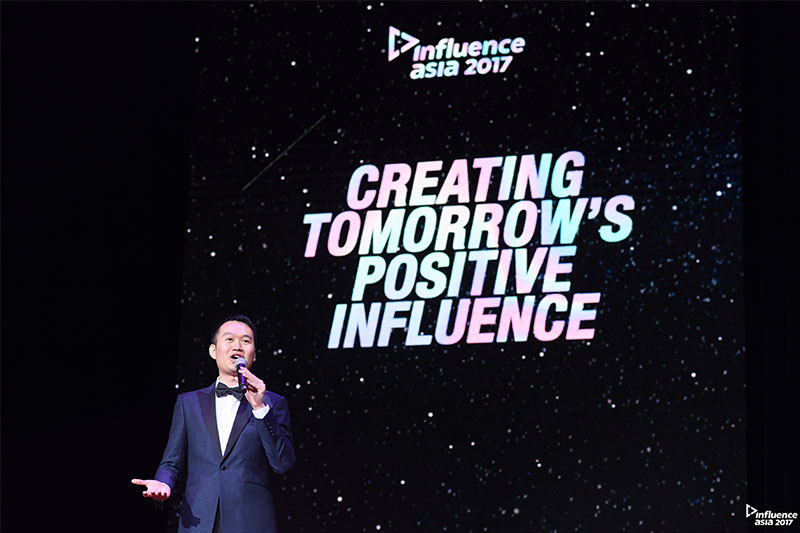Looking to incorporate influencer marketing as an integral part of your digital marketing plan? Read on to learn how to boost your brand awareness by harnessing the power of influencers.
Three years ago, self-funded startup HiSmile shot to global fame thanks to a picture Kylie Jenner posted of their teeth whitening kit on her Instagram. HiSmile, now a million-dollar business, is just one of many success stories that have put influencer marketing firmly in the spotlight as a brand’s most powerful marketing tool. A study conducted by US-based influencer marketplace Tomoson shows that brands generate USD 6.50 in revenue for each dollar spent on an influencer marketing campaign. To find out how businesses can best capitalise on the trend, we talked to Siang Ng, CEO of Gushcloud International (Agency) – Asia’s leading influencer marketing, talent, and entertainment agency with offices across the world including Singapore, Japan, Korea, and the US.

Siang manages a robust influencer marketing network, taking in over 12k influencers across Asia and brands including Toyota and SK-II. A mover in the industry for almost 10 years, he has seen the development of celebrity endorsement culture to this new era of the influencer, witnessing a shift in brand ambassadorship from distant celebrity figures to ‘ordinary’ people who have an established and high level of trust within their community of engaged followers.
That trusted relationship is a marketers’ dream and an antidote to a critical and long-held pain point in traditional advertising methods – namely, a lack of relatability and authenticity. According to Forbes, 92% of consumers trust an influencer more than an advertisement or traditional celebrity endorsement. That’s because they build their network of followers based on shared interests and peer-to-peer communication. “Consumers are human,” explains Siang. “They always relate better with another human being. Influencer marketing is all about ‘word of mouth,’ and that’s why it has been so relevant.”

So, influencers can sway purchasing decisions. Next, brands need to identify the ideal influencers to target and devise their marketing strategy. First, they need to know their audience. To do this, “think about what you’d like to see as a consumer in regards to your own brand,” Siang advises. Then, to maximize returns, select the right social media platform. “People go to Instagram for lifestyle aspirations, such as fashion tips and travel destinations, and to Twitter for bite-size information,” Siang points out. And, while Instagram leads as a global platform for influencer marketing, brands should also pay attention to emerging social media platforms such as Chinese short-form video app Tik Tok.

Next, assess the influencers’ audience. It goes without saying that its size is imperative to the virality of a campaign, but Siang argues that any campaign’s effectiveness actually comes down to meaningful connections – between the brand and the influencer, and the influencers and their followers. “One key mistake a lot of brands make is looking at influencers as a pure media platform,” he says. In truth, engagement numbers and reach should not be their only concern.
Recently, there has been a shift in focus to micro-influencers. “They are people with a very niche following who focus on topics as specific as anime or eyelashes, rather than a broad category,” Siang explains. To qualify as a micro influencer, aside from looking at the number of followers, it’s also necessary to consider the population size of the targeted region. “In a region as big as Indonesia, for example, 100,000 followers is still considered micro, whereas in Singapore, the same number can get one to the level of macro influencer,” he continues. Specialists in their own niche, these micro-influencers provide brands with a more targeted audience group with whom they often hold more sway.

“Study how influencers interact with their followers,” Siang suggests, with your ultimate goal being to, “make sure the brand slogan still suits the brand in someone else’s eyes. Treat influencers as your consumer, give them time to get to know your brand. Think what you can do for them in return for what they do for you.” And, when you have the right fit, trust them. “Keep the brand messaging as simple as possible and allow influencers to customize according to how they interact with their followers,” Siang emphasises. “At the end of the day, the content sits on their platform – they know best what appeals to their followers. It’s not about the number of campaigns you put out, but about that one campaign that stands out and makes that messaging stick.”

With the influencer industry projected to generate as much as USD 10 billion by 2020 according to New York Magazine, making the most of this customer interface is imperative for any brand wishing to gain traction. “Social media was perceived as a young millennial platform, but now, we’re seeing more middle-aged influencers,” says Siang. “Content-wise, video content will be a hit. It’s no longer about good photos, but more about good real-time content. Especially in Asia, where the trend for people engaging with real-time content through live streaming on various platforms is picking up much faster than that in the west.” Given its infinite power and proven success rates, it’s clearly worth getting on board with any new developments.





